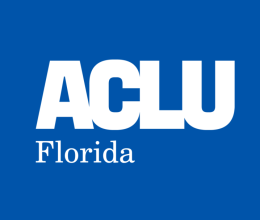
Rights Behind the Headlines is a blog series from the ACLU of Florida that dispels misinformation and gives Floridians critical information about the most pressing issues facing our state. Read the full series at aclufl.org/rightsbehindtheheadlines.
We’re dispelling Gov. DeSantis’ claim that anything fewer than a unanimous decision by all twelve jurors is adequate enough to impose a death sentence.
Gov. DeSantis is pushing the Florida Legislature to reintroduce nonunanimous jury recommendations for the death penalty as part of the state’s response to the Parkland mass shooting. Both the governor and lawmakers who have introduced Senate Bill (SB) 450 and House Bill (HB) 555 to overturn jury unanimity are justifying these bills by relying on repeatedly-disproven claims, including insisting that the death penalty deters crime—studies not only find no evidence of this, analyses show that the crime rate in states with the death penalty are higher than the rate in states that have abolished it.
Likewise, proponents of expanding the death penalty point to advances in DNA testing in an attempt to soothe concerns about the reality of the state killing innocent people. However, many of those waiting on death row will never be able to access DNA testing. And only recently have some, like Tommy Zeigler, finally been allowed to try to prove their innocence with DNA testing after years of obstruction by the state.
This approach to death sentencing is ignorant of history, the reality of the legal system, and the difficulty of freeing an innocent person from death row.
Nonunanimous juries are a vestige of the Jim Crow era. Following the Civil War, racial segregation was codified in state and local laws to prevent Black Americans from accessing the same liberties, legal protections, and political participation as white Americans. In this spirit, nonunanimous juries were introduced in the American legal system for the sole purpose of weakening the voting power of Black jurors in favor of white jurors without appearing overtly racist in nature. This undeniable historical fact was affirmed by the United States Supreme Court opinion written by Justice Neil Gorsuch in Ramos v. Louisiana—the 2020 ruling requiring unanimous juries for guilty verdicts in criminal cases.
The implication that Florida underuses the death penalty is false.
In 2022, six years after the U.S. Supreme Court required that a jury (not a judge) find each fact necessary to impose a sentence of death in Florida capital cases, Florida still managed to sentence more people to death than any other state. Florida currently has the second-highest death row population, sitting at just over 300 people.
But there is another death penalty statistic where Florida also leads that should give great pause to anyone pushing for this bill.
Since 1973, 30 people have been exonerated from Florida’s death row—one innocent person has been freed for every three people executed in the state. This is the highest number of death row exonerations in the entire country. Most of the people exonerated were sent to death row either by a nonunanimous jury or judicial override of life imprisonment sentences, the exact policies Gov. DeSantis is pushing to reinstitute.
One of Florida’s death row exonerees is Herman Lindsey, Witness to Innocence Director. Lindsey was sentenced to death by an 8-4 jury. His case not only highlights the issue with nonunanimous juries, but shows how factors outside of DNA, including false accusations, misapplied law, and police misconduct, can send an innocent person to death row.
- Florida’s reaction to mass shootings cannot hinge on unconstitutional sentencing that is guaranteed to bring harm to innocent people, especially innocent Black men, in the state. The death penalty is cruel and faulty. Pursuing this bill only furthers the injustices that pervade our legal system.






